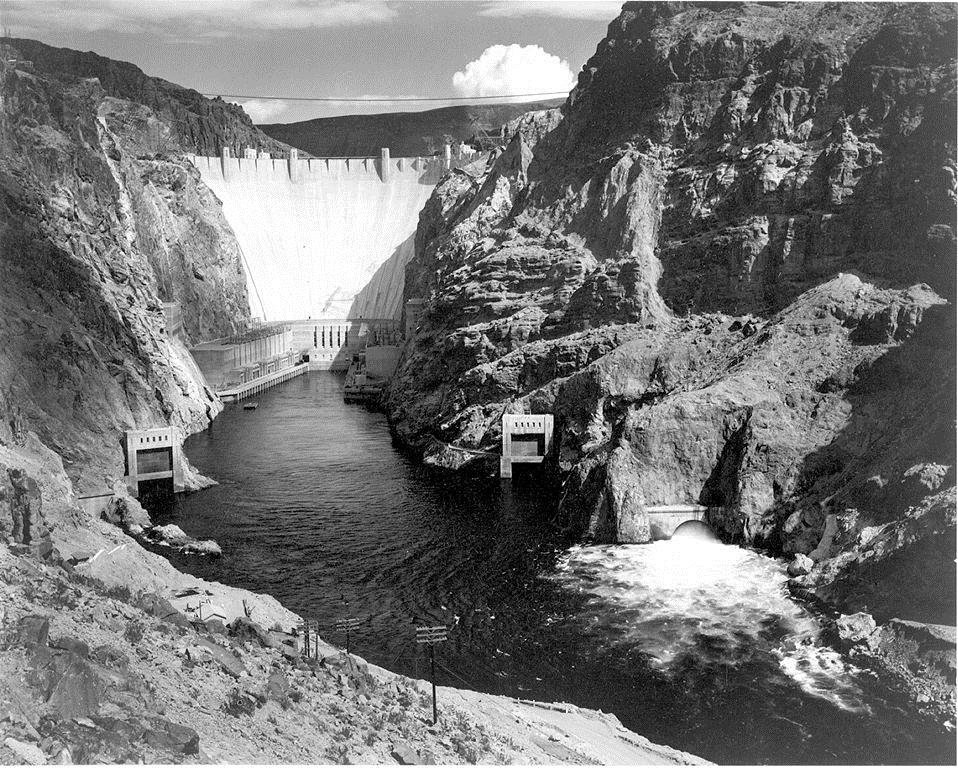
Renewable Baseload Energy
by Nicholas Piano
Introduction

For over a century, fossil fuels have been the backbone of our industrialized world, providing power that can be called upon quickly and easily. Our reliance on these fuels has led to well-understood systems, products, problems, and limitations. Continuous development in this sector includes the discovery of new wells and the recalculation of “Peak Oil” estimates – the point when global oil production reaches its maximum rate, after which it will begin to decline irreversibly. Most importantly, the costs associated with every part of the fossil fuel industry are well-known and factored into our global economy.
This reliance comes at a great cost: carbon emissions in populated areas, environmental degradation, and the global consequences of climate change. Despite advances in renewable energy, the inertia of this legacy system has kept fossil fuels at the center of our power grids.
Renewable sources possess attractive qualities that could enable a radically different approach to power generation. For instance, a wind turbine or a solar panel can operate wherever there’s wind or sun, even when disconnected from a central grid. This differs significantly from fuel-based systems, which require a constant supply. While infrastructure is initially needed and must eventually be removed for maintenance or replacement, a central grid based off renewables would allow for a much more decentralized system. Power could be generated precisely where it’s needed, with batteries storing excess energy. However, such a system is unrealistic given our current situation. A major hurdle is energy storage technology, particularly batteries. We currently lack the capacity to store energy on a scale sufficient to meet our usage demands without the consistent supply of dispatchable power from sources like fossil fuels. This limitation makes decentralization less viable and contributes to our highly centralized power infrastructure.
Any power system, regardless of size, faces a critical constraint: power output must precisely match demand at all times. A shortfall can lead to instability and power loss, while a surplus can degrade components and ultimately cause failure. The energy produced must flow somewhere, and as mentioned, our current storage technologies are inadequate. Today, demand fluctuations are primarily met by rapidly ramping natural gas generators up and down, as they offer the quickest response time among power generation methods. Replacing this rapid, on-demand fluctuation with renewable sources is undoubtedly a challenge.
A pragmatic approach to meaningfully reduce dependency on natural gas generation would be to find a renewable means of generating baseload power. While daily demand fluctuates, there’s always a minimum demand that must be met. This minimum demand is the baseload. Although this minimum also fluctuates, it does so much more slowly, making it suitable for power generation methods that can accommodate slower changes. Baseload power also represents the bulk of all power that an electrical grid produces. Meeting this minimum demand with renewable sources alone would account for over two-thirds of all power generated and would represent a monumental leap forward in reducing the share of power that is generated using fossil fuels.
Unfortunately, the intermittent nature of wind and solar generation makes them unsuitable for baseload power. Wind power depends on specific wind speeds, and solar requires sunshine and clear skies. These unpredictable factors prevent them from providing reliable baseload power. Until large-scale, long-duration energy storage becomes viable, wind and solar will remain supplementary rather than primary providers of baseload power.
Nuclear Power

“High Peaks of 200,000,000 Electron Volts Being Discharged at Splitting” – gelatin silver print, Fritz Goro (1939)
Since humanity first split the atom in the late 1930s and connected the first nuclear power station to the grid in 1952, the technology has undergone several major changes and improvements, with many more untested or currently under development. Few areas of energy research inspire young scientists as much as nuclear power – in part because of the potent mix of danger, power, and intellectual challenge it embodies. The principles it relies on were also discovered relatively recently, giving it an air of mystery and opportunity.
The massive infrastructure required to sustain a nuclear reaction is costly to build, but the investment is justified by the fact that the final product is one of the most powerful sources of energy on the planet. Once at full power and with correct management, a nuclear reaction can generate continuous energy for eighteen to twenty-four months at a time before needing to refuel. This makes it an ideal source of baseload power, as it remains unaffected by weather or environmental conditions. Additionally, nuclear power generation produces no greenhouse gas emissions, ticking another box as a clean energy source.
However, nuclear power is not without its disadvantages. Its potential for danger is well-known. The nuclear disasters at Chernobyl in 1986 and Fukushima in 2011 have significantly shaped public perception regarding the safety and reliability of nuclear power. If radioactive fuel leaks into the surrounding environment, it can be practically impossible to remove and can threaten life for centuries. Both disasters could have been far less severe with proper personnel training and improved reactor and auxiliary system design. For example, Fukushima failed not due to reactor design, but because the backup generator needed for cooling during a shutdown was overwhelmed by flooding. Similar to a jet airliner, its incredible power must be handled delicately and according to rigid protocols to ensure safety.
Nuclear power is also highly dependent on location. It requires stable terrain with minimal risk of erosion or seismic activity, as earthquakes or land shifts could compromise reactor integrity. Furthermore, a reliable freshwater source, such as a river, is essential for cooling. However, this cooling process also raises the temperature of the discharged water, which can disrupt local ecosystems by altering aquatic life cycles and reducing oxygen levels. To minimize environmental impact, nuclear plants must be carefully situated in areas where these effects are least harmful.
Despite these management challenges, exciting developments are currently underway for nuclear power – a notable example being Small Modular Reactors (SMRs). Traditionally, nuclear plants are custom-built for their chosen sites. SMRs, however, are factory-built and assembled on-site, making them portable and self-contained. Since costs of factory production lines can be optimized more easily than those of custom-built facilities, SMRs also lower the expense of setting up nuclear energy. Given the right inputs, such as a freshwater source, SMRs also offer greater flexibility in terms of location due to their reduced size, allowing them to connect to the grid where they are most needed.
Another recent development is the revitalization of research and investment in thorium as an alternative to uranium fuel. As countries seek energy independence, thorium has emerged as a potential competitor for the resource used in creating nuclear reactions. Acknowledged early in atomic energy research as an alternative fuel, thorium was largely discarded due to higher start-up costs for reactors that use it and its poor potential for supporting nuclear weapons research. As priorities shift to nuclear energy, the relative abundance of minable thorium is an attractive aspect for guaranteeing power production in uncertain times.
Nuclear fusion is another powerful prospect on the horizon. Although the technology is well understood, it suffers from an image problem caused by years of overpromising from politicians and eager investors. Even more than thorium reactors, it requires extremely high start-up costs, not to mention many unsolved problems. For example, structural elements in a fusion reactor suffer from “neutron embrittlement” – material breakdown caused by continuous bombardment from neutrons released by the reaction. The reaction is significantly more energetic than fission, preventing the use of traditional neutron absorption methods like graphite. Finding materials capable of withstanding the extreme conditions inside a fusion reactor would be a major step forward in making nuclear a competitive source for baseload energy production.
One problem that fusion avoids is the storage of extremely long-lasting spent nuclear fuel. The radioactive waste produced by fission reactions is not a by-product of the fusion reaction. However, even if we pivot to fission reactions to generate baseload energy, there’s also a silver lining: high-energy “waste” neutrons produced by fission can be used to prepare new nuclear fuel in a process known as “breeding.” Breeder reactors are even able to take the spent nuclear fuel and “resurrect” it for reuse, obviating the need for long-term storage. Ironically, large stores of spent fuel intended for isolation for thousands of years will likely be “mined” in the future to be fed into breeder reactors.
Nuclear power is among the most promising solutions for a world free from fossil fuels. While concerns surrounding cost, safety, and environmental impact remain, a huge amount of development is taking place to resolve these issues. With continued research, nuclear power is a hopeful option for a future where renewable energy can supply a grid’s baseload.
Hydroelectric Power

Hydropower has been used since the 1880s to produce electricity commercially. Harnessing the power of flowing water has a long history, predating widespread electricity use, for purposes like milling, pumping, or lifting. It can be utilized anywhere water flows consistently, including water released from man-made dams or reservoirs built for power generation or other purposes like irrigation. Beginning in the mid-twentieth century, hydroelectric power expanded worldwide as a way to reduce reliance on oil imports, and more recently, to lower carbon emissions. Major projects such as the Hoover Dam (1936) and the Three Gorges Dam (2012) demonstrated how hydroelectric power can significantly reduce dependency on fossil fuels.
The principle of hydroelectricity is relatively simple: the constant pressure of flowing water spins a turbine, which in turn generates electricity. It is also one of the most efficient means of generating power. Up to 95% of the energy contained in falling water can be converted into electricity, rarely falling below 85%. No other renewable energy source can claim comparable efficiency, making it a compelling option. High efficiency has other benefits: maximal energy in electricity generation means less energy is responsible for the wear and tear of important components, reducing long-term costs. Even more appealing is the fact that no greenhouse gases are emitted during operation.
Development of new hydroelectric projects has slowed in recent years and has even reversed course due to one of its biggest problems: its significant location restrictions. Even more so than nuclear power, hydroelectric projects require specific geological features, such as mountains, valleys, and gorges, to best harness water flow. By comparison, nuclear power does not require mountainous rock formations to operate or save on construction costs. Worse still, the ecological damage resulting from flooding a region to create the high reservoir is extreme, completely changing the landscape and threatening or destroying any life there. Many governments have deemed this environmental cost, along with the construction cost, too high despite the high efficiency and lack of greenhouse gas emissions. Some experts believe we have already passed “peak dam”, a point in time after which more dams are dismantled than constructed, as the cost of other renewable sources, such as wind and solar, continues to fall.
Despite its potential as a provider of renewable baseload power, its prohibitively high costs may make it too unattractive an investment for new developments. It is unfortunate, considering its advantages, that its shortcomings should be so overwhelming. Perhaps in the future, its simple principles can be put to good use in other ways. If damming a valley is required for other purposes, integrating hydroelectric power generation would maximize its utility.
Geothermal Power

Geothermal energy, or energy extracted from heat deep within the Earth, has been exploited since ancient times. The Romans, among other civilizations, built baths around hot springs and piped hot water into houses for heating. It wasn’t until the early twentieth century that this heat was used to generate electricity. Since then, several large projects, such as Wairakei Power Station in New Zealand (opened in 1958) and The Geysers, California, in the United States (opened in 1960), have been using the Earth’s heat to boil water, spin turbines, and generate power almost continuously.
According to our current understanding of the Earth’s interior, a layer of molten rock, or magma, lies beneath the relatively thin crust upon which we live. Still hot since the Earth’s formation eons ago, this heat slowly radiates out into space. Even this cooling is offset by gravitational tidal forces from our moon, which cause stretching, and thus heating, of the Earth’s interior over time. It’s safe to say that the Earth’s interior will remain hot for a very long time. If we can drill down to a depth hot enough to boil water, allowing the steam to rise to surface turbines, we could harness a potentially limitless supply of energy. This energy would also be independent of weather conditions and other surface factors, making it perfect for baseload power.
Geothermal power has a unique advantage: it can theoretically be done anywhere, as all you need to do is dig down. In practice, however, this is limited by cost. In some regions of the Earth, such as at the boundaries between tectonic plates, the crust is considerably thinner, so access to hot magma requires less drilling and is therefore cheaper. Anywhere else, other means of power generation are likely to cost less to build and maintain, making geothermal power less attractive.
Once a hole is dug, the running costs of a geothermal power plant are extremely low compared to other power generation methods. Drilling usually accounts for over half the initial cost, with the remaining expense being surface infrastructure. There is a risk, however, that over time the source of heat may move beneath the Earth due to eddies and currents in the magma below. This can be unpredictable and leave the significant cost of drilling literally in a hole in the ground.
There are also some exciting developments taking place currently, such as new drilling techniques learned from years of drilling for oil and natural gas. One of the first deep drilling projects, the Kola Superdeep Borehole in Russia, revealed surprising rock properties at different depths and provided drillers with the opportunity to test new methods. Today, instead of metal drill bits, several companies are testing beams of microwaves to superheat and vaporize the rock, allowing for drilling with less wear and tear. These techniques could help to bring the cost of drilling, and thus geothermal power plants, down to competitive levels.
Conclusion

The next step in power generation must leverage our existing infrastructure. This makes replacing baseload power the obvious choice. If power can be produced consistently, it can be plugged directly into the existing grid with minimal changes. With this step completed, humanity will be in a strong position to transform the infrastructure into something else. The key is small, yet powerful, steps.
At this point in time, nuclear power has the upper hand, and in my opinion, it should be the focus of the bulk of energy research in the near future. SMRs, combined with decades of practical knowledge about the behaviour of nuclear power plants, offer a clear picture of what our power infrastructure could look like. To solve the problem of spent fuel, breeder reactors are already in operation. Breeder reactors redirect a portion of the energy they produce to reuse spent fuel rather than discarding it as waste – one of the largest thorns in nuclear power’s side. The infrastructure is more expensive and difficult to manage, but the payoff of avoiding long-term storage of toxic fuel is a huge benefit. With time, it’s hopeful that their cost and complexity can be reduced, like SMRs.
Lastly, I would invite anyone focused on particle physics to concentrate on the puzzle of fusion and its major problems, such as neutron embrittlement. It is likely that a form of fusion offers the true future of energy generation on this planet. All that remains is to convince world leadership that the risk of the costly investment required is worthwhile. The perception of world instability remains a roadblock, and a political solution would need to be found.
Afterword
Innovation has often emerged from concentrated centers of economic development. Cities with enough industrial dominance to branch out and consider riskier ventures are the ideal places to pursue fusion research that lacks immediate payoff. Current approaches to fusion research rely on international cooperation or the promise of weapons development, both of which are failing to accelerate development fast enough to achieve independence from fossil fuels.
I propose the creation of a strategic network to connect industry-driven cities with the goal of fostering research into fusion power for the sake of our planet. A candidate city would need to be engaged in a globally important industry, such as microchip manufacturing. The network would maintain a directory of professionals that can support, fund, or participate in necessary research to remove barriers to discovering the means to make fusion power our primary means of baseload power generation.
If, like me, you are interested in practical approaches to our energy future and the future of our planet in general, and you would be interested in a professional network to collaborate on fusion research, please get in touch.
Contact: tela.app/id/nicholas_piano
Latest Articles
- The Neglected Value of BreastfeedingOn the benefits of breastfeeding
- Architecture Without a FutureOn architectural historicism
- The Absurdity of the EverydayOn seeking and creating meaning
- Bridging Science and SocietyOn interdisciplinary collaboration
- Renewable Baseload PowerOn the future of energy
- AI and the Battle for CommunicationOn control of communication
- Operating in a Bitcoin WorldOn the new monetary order
- Beyond Political NostalgiaOn hope as a political force
- The New Age of CaesarsOn the end of liberal democracy
- Social Media: Five Stages of GriefOn reclaiming our attention
About the author
Nicholas Piano is a software developer with a background in astrophysics. He builds websites, works on blockchain technology, and dabbles in AI. He thinks a lot about the future of communication, which lead him down rabbitholes into energy infrastructure.
Updates
Sign up to the CATALYST Updates Substack to receive the monthly schedule for new articles, news on the physical print-run of CATALYST’s inaugural issue, and details on the upcoming CATALYST Conference.


